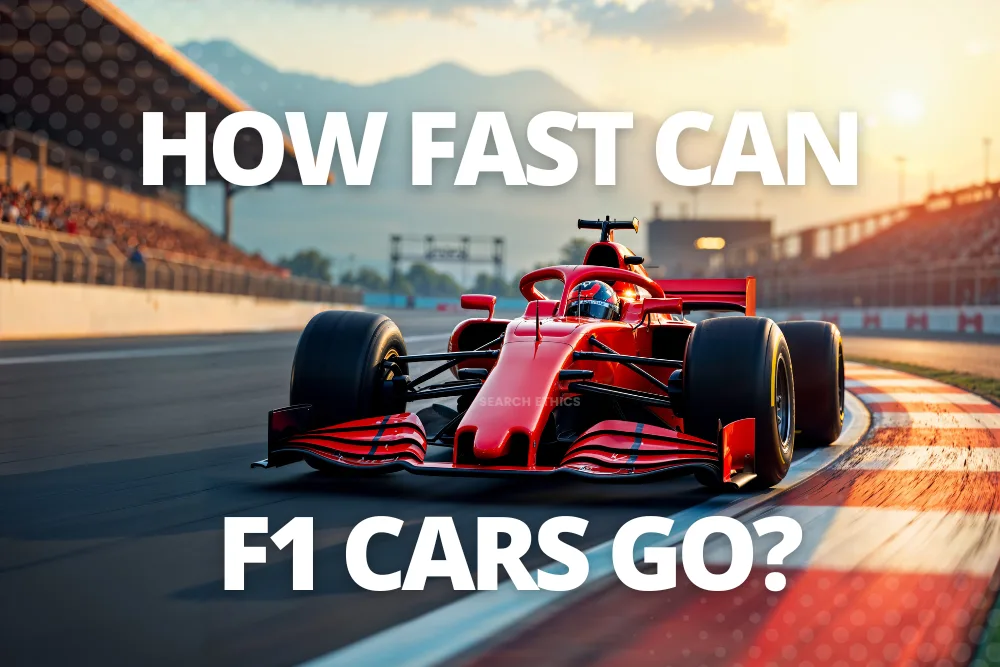Now Reading: How Fast Can Formula One Cars Go
-
01
How Fast Can Formula One Cars Go
How Fast Can Formula One Cars Go

Formula One cars are among the fastest and most advanced racing machines in the world. But how fast can they really go? The answer depends on many variables—track layout, aerodynamics, power unit performance, DRS effect, and even altitude. In this article, we’ll explore the top speeds achieved by F1 cars, what affects their speed, and how current regulations shape these numbers.
The Fastest Speed Ever Recorded in F1
The highest officially recorded top speed in a Formula One race was 372.5 km/h (231.4 mph), set by Valtteri Bottas during the 2016 Mexican Grand Prix, driving a Mercedes-powered Williams. Interestingly, there was another instance at the 2016 Azerbaijan Grand Prix where Bottas reportedly hit 378 km/h while slipstreaming behind other cars, but this figure was later disputed by the team due to potential GPS data inaccuracies.
Regardless of the debate, both events highlight just how fast F1 cars can go when all conditions align—long straights, powerful engines, car alignment and aerodynamic efficiency.
Current Generation Top Speeds
Since the 2022 regulations overhaul, modern F1 cars have become more aerodynamically efficient but slightly heavier due to safety improvements and larger wheels. Despite this, the cars remain blisteringly fast.
The fastest speed recorded in the current generation of cars was by Yuki Tsunoda, who hit 360 km/h during the final lap of the 2023 Belgian Grand Prix, benefitting from a strong slipstream (commonly referred to as a “tow”) and DRS assistance.
Why Top Speeds Vary Between Tracks
Not all circuits allow for extreme top speeds. Factors like corner layout, track altitude, and weather all play significant roles. Let’s break it down:
-
Long Straights: Tracks like Monza (Italy) and Spa-Francorchamps (Belgium) allow for the highest speeds due to their long, uninterrupted straights.
-
Altitude: At Mexico City, which sits 2,200 meters above sea level, the air is thinner, reducing aerodynamic drag. This helps cars achieve high top speeds despite running high-downforce packages.
-
DRS (Drag Reduction System): The DRS allows the rear wing to open, decreasing drag and increasing top speed on specific straights during qualifying and race conditions.
Hybrid Power and Energy Limits
One key reason why top speeds can plateau or decrease during a lap—even at full throttle—is energy management. Modern F1 cars use hybrid power units that combine an internal combustion engine with energy recovery systems (ERS). When the battery is depleted, even at full throttle, the car may begin to decelerate.
This can be seen in telemetry data like Lando Norris’ qualifying lap at Monza, where the car begins to slow despite being at 100% throttle—proof of energy limitations rather than mechanical or aerodynamic constraints.
Team-Specific Performance
Every team achieves top speed differently:
-
Williams (2023): Often among the top in speed traps thanks to low-drag car setups.
-
McLaren: Has a lower baseline speed but gains more from DRS and slipstreams.
-
Ferrari: Less DRS effect but higher baseline speed.
-
Aston Martin: Notably large DRS effect at certain tracks like Spa.
Impact of Altitude: The Mexico Effect
Mexico’s high-altitude circuit presents a unique challenge. At 2.2 km above sea level, air density drops by nearly 20%, which significantly reduces drag but also downforce and cooling efficiency. Teams compensate by running larger rear wings and bigger cooling outlets, which would be highly inefficient at sea-level tracks like Monza.

Similarly, the Alfa Tauri used significantly larger air outlets at Mexico to manage the engine heat.
Data Discrepancies: Speed Trap vs. Real Top Speed
Speed traps—located at specific points around a circuit—often do not capture a car’s absolute top speed. That’s because:
-
Each driver may hit peak speed at different track points.
-
Speed traps are fixed, but actual top speed can occur before or after them.
-
Energy deployment strategies vary.
For accurate measurements, teams and broadcasters use GPS data and telemetry from the car, rather than relying solely on speed trap readings.
FAQs: F1 Top Speeds Explained
What is the fastest speed ever recorded in Formula One?
372.5 km/h (231.4 mph) by Valtteri Bottas at the 2016 Mexican Grand Prix. A disputed reading at 378 km/h was noted in Baku the same year.
What’s the top speed in the current generation of F1 cars?
360 km/h by Yuki Tsunoda at the 2023 Belgian Grand Prix.
Why do F1 cars sometimes slow down on straights?
Energy recovery systems can run out of stored power, causing deceleration even at full throttle.
Why is Mexico City known for high speeds?
Its high altitude reduces air resistance, allowing higher top speeds despite heavy downforce setups.
What affects how much speed DRS adds?
Car design, rear wing shape, and aerodynamic setup determine how effective DRS is on a given car.
Is DRS always active?
No. It’s only available in specific zones during the race and always allowed in qualifying.
Why don’t all cars hit the same top speed?
Differences in aerodynamics, power unit performance, driver technique, and race strategy all contribute.
You may also love to hear about electric cars vs petrol cars
Dony Garvasis is the founder of Search Ethics, a platform dedicated to transparency, authenticity, and ethical digital practices. With over six years of experience in SEO and digital marketing, I provide expert content on automobiles, Artificial intelligence, technology, gadgets, science, tips, tutorials and much more. My mission is simple: Ethical Search, Genuine Results! I will make sure people everywhere get trustworthy and helpful information.










